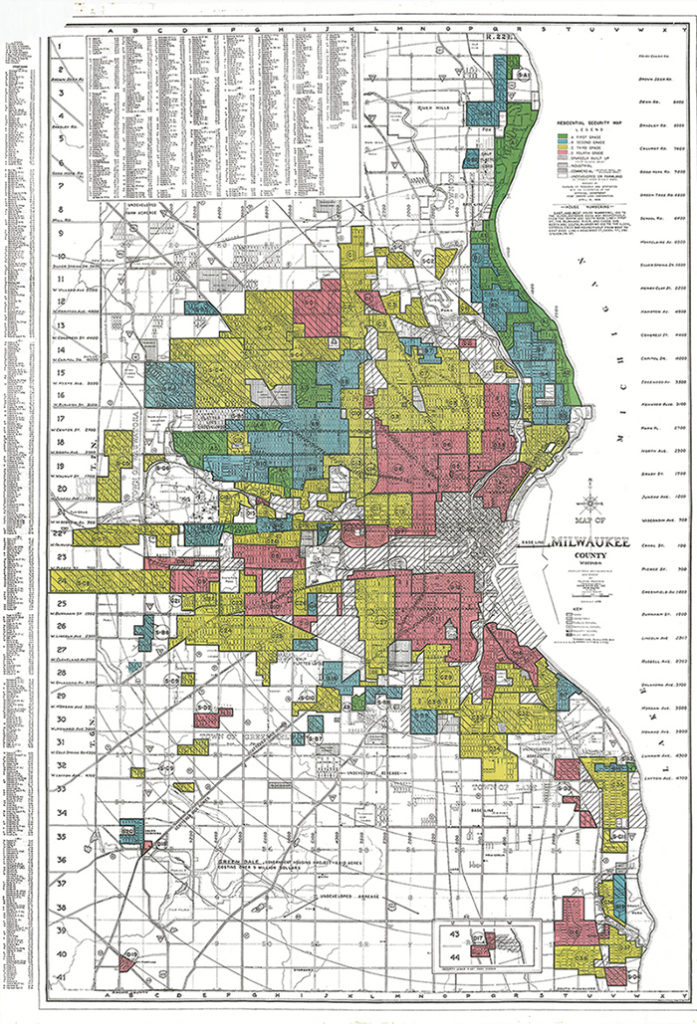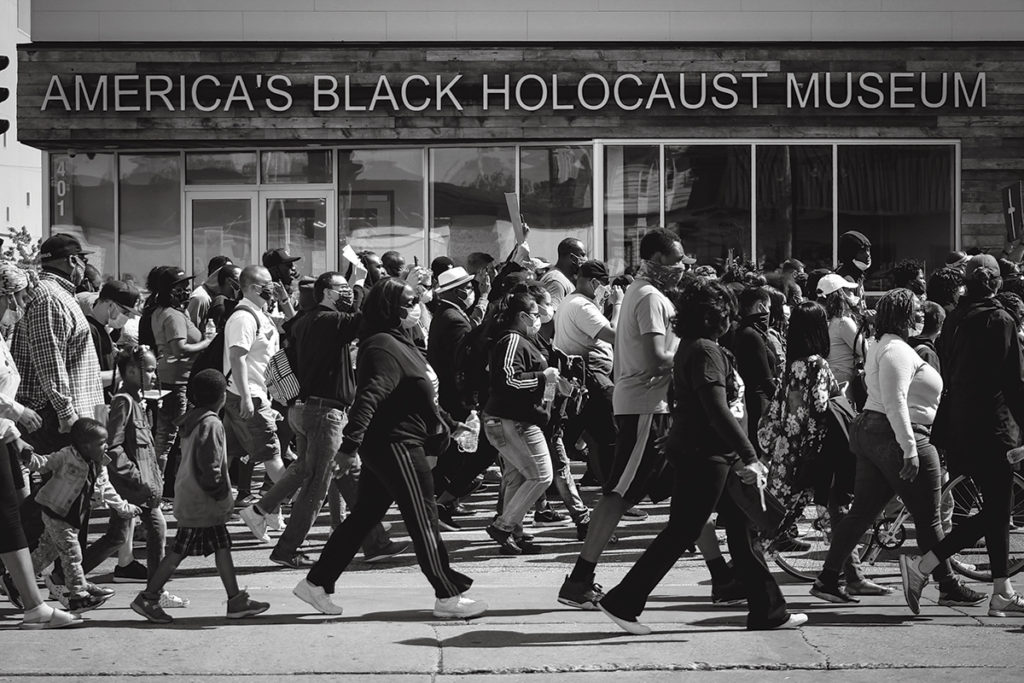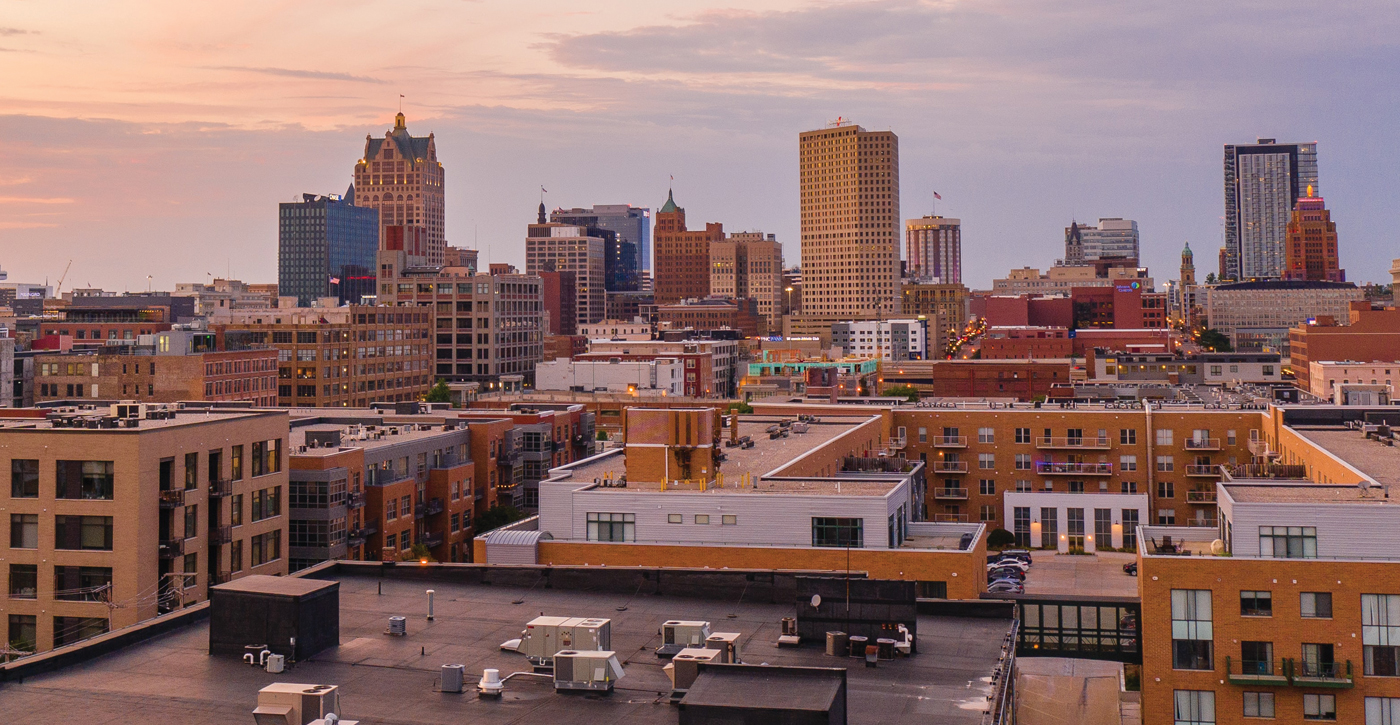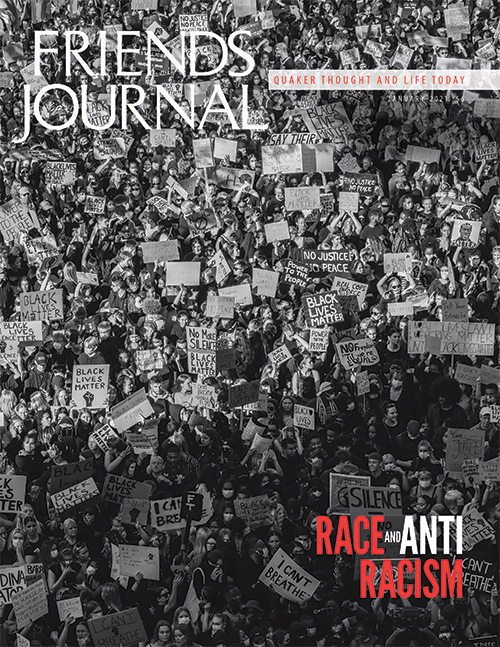I recently spent a few years of my life trying to use a faith-based approach to address the racial and economic segregation in the Milwaukee, Wisconsin region where I live. To understand what an audacious undertaking this was, it is important to know that the Milwaukee metro area is one of the most hyper-segregated regions in the United States. Of the 100 most populous regions in the country, Milwaukee ranked first in Black-White segregation, second in Latino-White segregation, and thirty-fifth in economic segregation.
What is most shocking is that a full 72 percent of the nearly quarter-million poor people within the four-county metro area is packed into the city of Milwaukee. This was done by design through racially motivated local, state, and national public policies dating back to before World War II. In the Milwaukee region the majority of low-income individuals also happen to be People of Color.
The idea that the region’s poor and People of Color are jammed by design into the 95 square miles of the city weighed on me as one of the paramount social justice issues facing the people of Milwaukee. Having once served as the chief of staff to the mayor of Milwaukee, I understood how cash strapped the city is and how the only equitable way to address this imbalance was through a regional approach. I also understood what a difficult conversation this would be, and one, I imagined, that could effectively be held within the faith community.
It was my hope that we could bring urban and suburban congregations together to learn about the systemic roots of our racial and economic segregation and that through the process, we would forge strong interpersonal bonds that would supersede politics. The political dynamics of the region are such that suburban and rural Republican legislators control the seats of power in the state legislature, while the city of Milwaukee stands as a Democratic stronghold, and thus has little political sway in a Republican-dominated state government.
The vision was that the urban congregations would bring the authentic voice of the effects of segregation to the conversation, while the suburban congregations would be the entryway to open the hearts and minds of conservative Republican legislators.

I reached out to the Interfaith Conference of Greater Milwaukee (IFCGM): a 50-year-old nonprofit collaboration of 22 member denominations and faiths whose mission is to build relationships and foster work on social justice issues. Initially, I offered to raise funds for IFCGM to hire me as a consultant to do this work. Instead, their executive director said that the vision of addressing racial and economic inequality from a faith-based and regional approach was an important one and that they had enough money in their budget to cover the cost.
And so we began the process of creating what came to be known as the “One Community” project. The initial work was two-fold: first, we needed to develop a curriculum and a process; and second, we had to identify urban and suburban congregation partners willing to walk together through this journey of education, relationship building, and advocacy.
Finding the urban–suburban faith partners is work that unfolded throughout the 18 months of this effort. We strove to keep the urban and suburban partnerships within the same faith traditions, making it easier to foster relationships. We ended up working with urban–suburban pairings of Catholic, Muslim, Methodist, Baptist, and Presbyterian congregations.
It was my hope that we could bring urban and suburban congregations together to learn about the systemic roots of our racial and economic segregation and that through the process, we would forge strong interpersonal bonds that would supersede politics.
Knowing that our end goal was to foster state legislation that would address some aspect of the racial and economic segregation of the region, we targeted suburban congregations in the home districts of influential legislative leaders.
For the curriculum, we crafted four sessions that each lasted approximately two hours, as outlined below. We also created some ground rules. The pastors needed to be onboard. The number of participants from each partner needed to be roughly equal, and would be dictated by the smaller congregation. Participants needed to agree to attend all four sessions, and the urban and suburban partners would take turns hosting. While not a requirement, food was typically served at each meeting.
Wanting to ensure that everyone started with the same understanding, the first session was an overview of the systemic origins of the racial and economic segregation of the region. The urban participants were primarily People of Color, and thus this session was a difficult one for them, as it dredged up many of the issues they confront throughout their lives. For example, we showed how 16 of the 18 municipalities within Milwaukee County historically had some sort of deed restriction dictating that “No persons other than the white race shall own or occupy any building on said tract (other than) those who are domestic servants of the owner.”
We also showed how the federal government created a “state sponsored system of segregation” by prohibiting the Federal Housing Administration (FHA) from insuring mortgages anywhere African Americans lived or lived nearby, a practice that was mirrored by private banks. During the 34-year period between 1934 and 1968 only 2 percent of all FHA loans went to households of Color, while at the same time, our government spent millions of dollars creating mostly White suburban communities through subsidized loans. The result was that People of Color were being redlined and denied resources, while White Americans were gaining wealth and security with the aid of government benefits.
Another critical piece of the segregation puzzle was access to jobs. Beginning in WWII and through the 1970s, Black families migrated from the South to the Midwest in order to access the plentiful number of manufacturing jobs available. While these jobs provided good wages, families of Color were prohibited from using their hard-earned dollars to buy homes and begin to build wealth. In 1963 the city of Milwaukee supported over 119,000 well-paying manufacturing jobs. That number plummeted to 27,250 by the year 2009. Unfortunately, the disappearing manufacturing jobs were replaced by ones in the service industry which were much lower paying.
Our second session was crafted to build relationships through a profound sharing experience. Modeled after the IFCGM Amazing Faiths program, we designed a deep-listening process aimed at helping participants get to know each other beyond a superficial level. We had a deck of cards and on each card was a probing, personal question such as: how do you experience God? Do you believe in evil? When did you feel closest to God? Have you ever felt/seen discrimination personally?
When it was a participant’s turn, they received the deck, turned over the top card, and had four minutes to answer. All the other participants at the table had only one job: to listen. The only question allowed was “Can you please speak up?” This quickly became my favorite session. Because of the design of the process, people could open up without fear of being challenged. Invariably, we had tears and hugs during most of these encounters.
The third session provided a broad overview of possible solutions to regional segregation and centered around four topics: affordable housing, jobs and job training, transportation, and corrections reform. Within these areas we delved into a dozen specific proposals. Through a ranked scoring process, we arrived at corrections reform as the issue we wanted to discuss with elected officials.
The last session was the one where I hoped the “rubber would hit the road.” We asked participants to conduct a discussion and ranking process to arrive at specific recommendations for each of three questions: (1) How do we educate our entire congregation on the issues of systemic racism? (2) How do we deepen the relationship between the urban–suburban partner congregations? (3) When and how do we meet with our legislators and have a conversation with them on these issues?
Of the three questions, the one that always received the most animated conversation and created the most suggestions was on deepening the relationship between the partnering congregations. In fact, the most productive byproduct of this effort was the new urban–suburban partnership that blossomed through choir swapping, pulpit sharing, combined service projects, and so much more.
As an old community organizer, I recognize that just as there are no final victories, there are also no lasting defeats, as long as we stay attuned to the leadings of the Spirit.
What didn’t happen (except in one partnership) was meeting with influential state legislators. The suburban congregations never felt comfortable taking the step of discussing solutions to segregation with their elected officials—even though this was built into the process and was voiced as part of the plan from the very beginning.
The reality that we never got to the point of legislative advocacy was a disappointment to me and to others involved in the effort. But I console myself with the fact that I took on this initiative because I felt led to do so, and as such, must be content with the outcomes as they are and not as I wish them to be. Some may say I was tilting at windmills, but I see it as a great grace to be called to this work. As an old community organizer, I recognize that just as there are no final victories, there are also no lasting defeats, as long as we stay attuned to the leadings of the Spirit.

There are three lessons learned.
First, there is a genuine desire to build urban–suburban faith-based collaborations, but these relationships must be nurtured and allowed to grow at their own pace. And the outcome should be nothing more nor less than deepening the relationships between the two congregations.
The second lesson is that asking suburban congregations to confront systemic racism is critical, but it cannot be rushed. I wonder if we would have gotten less resistance from the suburban pastors if we had taken the step of deepening the conversation about systemic segregation within their individual congregations at a slower pace with no talk about political action. In retrospect, it would have been helpful to construct a process to slowly unfold the discussion of systemic segregation within suburban congregations with the same deliberate design as we did with the overall One Community four sessions curriculum.
And the final lesson is that timing is everything. I suspect that if we had unveiled the One Community project during the summer of 2020, in the wake of George Floyd’s death and the numerous Black Lives Matter protests throughout the country, we would have seen more receptivity to the call for structural solutions.





Comments on Friendsjournal.org may be used in the Forum of the print magazine and may be edited for length and clarity.